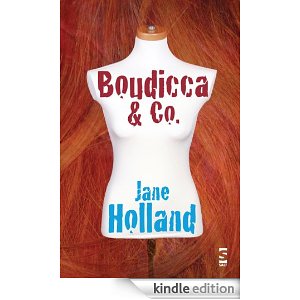 |
| Alison Lock performs from THREE HARES |
|
|
Raw Light: the magazine
In this article I will describe a little about the process of
writing the poem 'Three Hares'. The poem is part of a music/poetry
collaboration and the result is something that attempts to cross the boundaries
of word and song and musical note and rhythm.
The idea was to produce a piece
that would last for 15 to 20 minutes and take the audience on a journey
through our forests and woods, using a variety of techniques used in both arts:
changes in rhythm, metre, tempo, rhyme, repetition, syllabic consistency, prose
and poetry styles. The sonic patterns of the woods: birdsong, wind, falling
trees, running water etc., informed the writing.
Three Hares
Green Man, White Goddess.
Three Hares is a symbol of rotational symmetry
where the ears of the hares are shared and
like a treskelion they appear to be in constant motion.
It has symbolic and mystical associations. As with
the Green Man, it is a meme, a carrier of ideas,
an optical illusion, representing the cycle of growth,
invoking the fertility of the White Goddess.
Why Three Hares? This is a question I asked myself. I wanted
to write about trees -
how they sustain us,
how they nourish our culture,
our folklore, our myths,
our deepest dreams.
- but the symbol of the Three Hares and its universal
connections with fertility, the cycle of life, death and rebirth seemed a
perfect illustration for the life of a forest. I had been reading a lot
about the ecological importance of trees; the role of trees in the eco-system,
how they are essential to the survival of many creatures, plants and
micro-organisms, how they are interconnected with all of life on this planet.
But when I thought about trees, woods and forests, I thought
about fairy tales, battles, hiding places and I realised that I wanted to
take
... a look at a liminal world, a place where
transformation occurs.
Many of the stories we read, or are read to as children,
describe forests as dark places patrolled by witches, trolls, goblins and
wolves. Folktales from all over the world tell of trees that are personified;
protective of the innocent, or dangerous to those who wish them harm. But I was
not only interested in fairy tale trees, I wanted to explore the trees that
surround us today.
The poem begins with the ancient; the pagan worship of trees
and the enigma of the Green Man, another symbol of fertility, carved in stone
and wood and found in many places in Europe and Britain. This symbol takes the
human-like attributes of the tree: trunk, branches, the gnarled features for a
face, the sap as blood. Some say that the Green Woman is the Earth, Mother
Earth:
..whose carved face,
frond hair, ivy brow,
skin peeled or smooth
as beech bark, trace-veined,
age wefted, tatted webs,
tattooed, blood-crossed
with the oak,
the birch, the rowan.
By walking through the woods of the South Pennines I
explored the footpaths, the margins, the scars, to find out about their recent
history.
The areas of woodland are usually marked by a perimeter;
sometimes a physical signpost or a fence:
A gilded post is a sign
for the wayfarer, a snicket
leads to a stile, a stepping stone,
a cross-bar, a kissing gate
and the path becomes a bridleway
where a rustic fence marks
the perimeter of a world
where turned earth meets cloud.
Other times the trees are edged by a canal where:
the Himalayan Balsam ushers
like a nodding crew,
leggy, white in the half light
winking at a passing boat.
Not only are they places of contemplation, of dreamy walks
where the only sounds are the birds in the trees, but they are places of
leisure and activity:
A mountain biker skids, sped-
tacking his prints on the yarrow bend
spraying the nettles Pollock-style.
The woodlands of the Pennines have a particular connection
to the mills in the valleys built during the Victorian era – these woods are
etched with the footpaths used by the millworkers:
as beech nuts crack under foot,
a loom's shuttle is thrown
back and forth, back and forth,
Finally, as I watch the hares leap across the open moors, new
trees are being planted in the open fields. Those with a consideration for the
future, our future, are intent on replenishing the woodlands:
Fields of ragwort are released
to the gilder rose, the oak,
the beech, the sycamore too.
First planting is the birch,
the bringer
of light into darkness,
the pioneer preparing the soil
like a good besom
for the return of the White Goddess.
Here, I have talked about the poem itself, but this is only
a part of the whole process. I wanted to create something that was an
experience, an atmosphere, rather than piece to read only. We have produced
a booklet of the poem to accompany the performances. It was produced by the
graphic artist, David Kaye; his response to the poem was both sensitive and
creative and the result is a work of beauty.
'Three Hares' was written with a musical interpretation in
mind and I collaborated with a musician I had worked with before. Robin Bowles
had accompanied me at a reading of 'Eye of the Heron', a piece written as a
result of my work as Poet in Residence at Holmfirth Arts Festival. He played
both mandolin and bouzouki (notably instruments made of wood). He perfectly
captured the rhythms, the sounds, the essence of that piece and I wanted to
continue this work in 'Three Hares', only this time creating a closer
collaborative process from the beginning. But that's another post.
We hope to record 'Three Hares' soon but perhaps for now
you might like to listen to
'Eye of the Heron' on Soundcloud.
Alison Lock



















